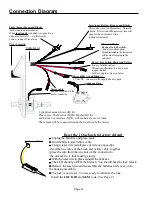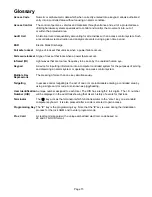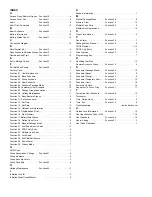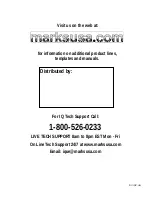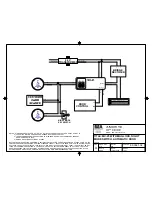
Page 15
Glossary
Access Code
Numeric or alphanumeric data which when correctly entered into a keypad, allows authorized
entry into a controlled area without causing an alarm condition.
Access Control
The control of persons, vehicles and materials through entrance and exit of a protected area
utilizing hardware systems specialized to control and monitor the movement into, out of,
or within the protected area.
Audit trail
A historical record sequentially accounting for all activities with an access control system. Such
a record allows reconstruction and analysis of events during a given time period.
ESD
Electro Static Discharge
Fail safe lockset
A type of lock set that unlocks when a power failure occurs.
Fail secure lockset
A type of lock set that locks when a power failure occurs.
Infrared (IR)
Light waves that are too low frequency to be seen by the unaided human eye.
Keypad
A device for inputting information into a computer controlled system for the purposes of arming
and disarming an alarm system or operating an access control system.
Multiple Key
The pressing of more than one key simultaneously.
Depressions
Tailgating
In access control, tailgating is the act of one or more individuals entering a controlled area by
using a single card or code. Also known as piggybacking.
User Identification
A unique number assigned to each User. The UID has a length 2 to 4 digits. The I.D. number
Number (UID)
will be displayed in the audit trail showing that User’s history of events for that lock.
Terminator
The “
✳
” key acts as the terminator which functions similar to the “enter” key on a standard
computer keyboard. It is also pressed after a code is entered to gain access.
Programming Key
The “
#
“ key is the programming key. Note that the “
#
” key is used during the initialization
process for the lock GGM and to enter program mode.
Prox Card
A credit card size card with a unique embedded electronic code based on
26 and 37 bit HID format.














